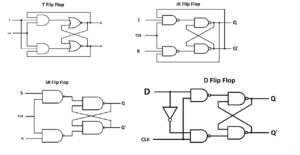Comparators are fundamental building blocks in electronics, serving as key components in Data and Control Systems. At their core, these devices compare two input voltages and produce an output based on the comparison, acting as decision-makers that determine whether one voltage is higher, lower, or equal to another. Their role is crucial, particularly in bridging digital and analog circuits.
As we explore this topic further, we will examine the different types of comparators used in electronic circuits, focusing on their operations and applications. Additionally, we will touch on related components in data and control systems, such as types of memory modules and types of flip flops, which also play essential roles in the functionality of electronic systems. Whether you’re a seasoned electronics professional or a curious enthusiast, this guide provides a comprehensive understanding of these vital components.
What Are Comparators in Electronics?
At its essence, an electronic comparator is a simple device, but its function is crucial in many electronic systems. Let’s break down its basic principle. Imagine two input voltages, often labeled as V1 and V2. The comparator’s primary job is to assess these voltages. If V1 is greater than V2, the comparator might produce a high output. Conversely, if V1 is less than V2, it might produce a low output. In some configurations, if both voltages are equal, the comparator might produce a specific output or no change at all.
In simpler terms, the comparator evaluates the difference between its two input voltages. Based on this evaluation, it generates an output signal, which can be a representation of the voltage difference or a simple binary signal indicating which input is higher.
This operation might sound basic, but it’s this simplicity that makes comparators versatile. They act as the bridge between analog signals, which can vary continuously, and digital signals, which are often binary (high or low, 1 or 0). By determining thresholds and making decisions based on input voltages, comparators play a pivotal role in converting analog signals to digital ones, among other tasks.
As we progress through this guide, we’ll explore the various types of comparators and their nuanced operations. But always remember, no matter how complex the subtype, the foundational principle remains the same: comparing two input voltages and producing a relevant output.
Types of Electronic Comparators
When we talk about electronic comparators, it’s essential to understand that there isn’t just one “universal” type. Instead, based on specific requirements and applications, various types of comparators have been developed over the years. Each type has its unique characteristics, advantages, and ideal use cases.
In essence, the primary function remains consistent across all types: comparing input voltages. However, the way they handle this comparison, their response times, and their output characteristics can vary significantly. Here is the list of the 8 types of comparators in electronics that we are going to cover today.
- Analog Comparators
- Digital Comparators
- Window Comparators
- Zero Crossing Detectors
- Inverting Comparators
- Non-Inverting Comparators
- Differential Comparators
- Rail-to-Rail Comparators
In this section, we’ll delve into the different types of electronic comparators, from the basic analog and digital comparators to more specialized ones like window comparators and zero-crossing detectors. By understanding these distinctions, you’ll gain a clearer picture of how and where each comparator type fits into the broader electronics landscape.
1. Analog Comparators
Analog comparators are the foundational members of the comparator family. As the name suggests, they operate primarily within the realm of analog signals, which are continuous and can take on any value within a given range.

Working Principle of Analog Comparators:
The workhorse among different types of comparators, the primary function of an analog comparator is straightforward. It takes in two analog input voltages, compares them, and then produces an analog output signal based on the comparison. If the non-inverting input V+ is higher than the inverting input V–, the output swings to its maximum positive value. Conversely, if V– is greater than V+, the output swings to its maximum negative value.
Features of Analog Comparators:
- Speed: Analog comparators are generally faster than their digital counterparts because they don’t need to process digital logic or conversions.
- Sensitivity: They can detect minute differences in input voltages, making them ideal for precision applications.
- Output Range: The output typically swings between the supply voltages, giving a clear indication of which input is higher.
Applications of Analog Comparators:
Analog comparators are versatile and find their way into various applications. Some common uses include:
- Voltage level detection: Determining when a voltage crosses a specific threshold.
- Signal conditioning: Cleaning up noisy signals by setting a clear threshold for high and low states.
- Oscillator circuits: Helping generate square waves from sinusoidal inputs.
Advantages and Limitations of Analog Comparators:
Advantages:
- Direct and immediate response to input changes.
- Simple design and operation.
- Suitable for a wide range of analog applications.
Disadvantages:
- Susceptible to noise, which can cause false triggering.
- Limited by their bandwidth in high-frequency applications
2. Digital Comparators
Stepping into the digital domain, digital comparators stand as a testament to the evolution of electronics. Unlike their analog counterparts, which deal with continuous signals, digital comparators work primarily with discrete, binary signals.
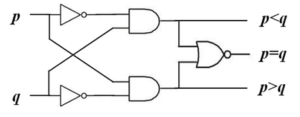
Working Principles of Digital Comparators:
Digital comparators operate by comparing binary numbers or digital signals. When presented with two digital inputs, the comparator assesses their values. If the first input is greater, the output might be set to ‘1’. If the second input is greater, the output might be ‘0’. In cases where the inputs are equal, specific digital comparators can provide a separate equality output.
Characteristics of Digital Comparators:
- Binary Operation: Digital comparators work with binary values, making them integral to digital systems.
- Complexity: They can be more intricate than analog comparators, especially when comparing multi-bit binary numbers.
- Output Signals: The outputs are digital, often represented as ‘high’ or ‘low’, ‘1’ or ‘0’.
Applications of Digital Comparators:
Digital comparators are foundational in digital systems. Some of their primary applications include:
- Digital data processing: Comparing binary data in computers and microcontrollers.
- Memory devices: Checking data integrity and ensuring correct data retrieval.
- Arithmetic units: Assisting in mathematical operations by determining the relationship between binary numbers.
Advantages and Limitations of Digital Comparators:
- Precision: Digital comparators offer exact comparisons, eliminating the ambiguities that might arise in analog signals.
- Integration: They fit seamlessly into digital systems, from simple gadgets to complex computer architectures.
Consistency: Their digital nature ensures consistent and repeatable results, unaffected by minor fluctuations.
3. Window Comparators
Looking deeper at types of comparators, we encounter the window comparator. This unique device doesn’t just compare two voltages in the traditional sense; it checks if a voltage lies within a specific range or “window.” Hence, the name “window comparator.”
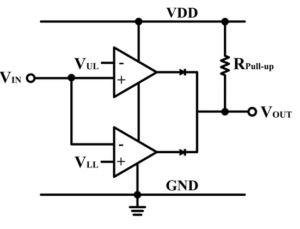
Working Principle of Window Comparators:
A window comparator uses two threshold voltages to define its window: an upper threshold and a lower threshold. When an input voltage is fed into the comparator, it checks the following:
If the input voltage is below the lower threshold, the output is set to a specific state (often ‘low’ or ‘0’).
If the input voltage is above the upper threshold, the output is set to another state (often ‘high’ or ‘1’).
If the input voltage lies between the two thresholds, the output indicates that the voltage is within the window.
Characteristics of Window Comparators:
- Dual Comparators: A window comparator typically consists of two individual comparators to check the upper and lower thresholds.
- Versatility: The window or range can be adjusted based on the desired application.
- Clear Indication: The output indicates whether the input is below, within, or above the set window.
Applications of Window Comparators:
Window comparators are particularly useful in scenarios where a signal’s specific range is of interest. Common applications include:
- Battery monitoring: Ensuring the voltage remains within safe limits.
- Temperature control systems: Checking if the temperature is within the desired range.
- Signal validation: Ensuring a signal is within expected parameters, filtering out anomalies.
Advantages of Window Comparators:
- Precision: Window comparators can precisely detect if a signal is within a set range.
- Safety: They are crucial in systems where operating within specific parameters is vital for safety or functionality.
- Flexibility: The ability to adjust the window allows for a wide range of applications.
4. Zero-Crossing Detectors
Zero-crossing detectors are one of the special types of comparators. They are designed to detect the exact moment a signal crosses the zero-voltage point. This transition, from positive to negative or vice versa, holds significance in various applications, especially in waveform analysis and signal processing.
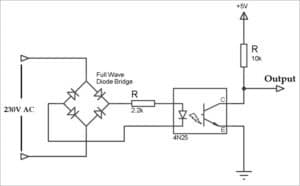
Working Principle of Zero-Crossing Detectors:
The primary function of a zero-crossing detector is to monitor an input signal and produce an output whenever the signal crosses the zero-voltage level. The output can be a pulse or a state change, indicating the zero-crossing event.
Characteristics of Zero-Crossing Detectors:
- Sensitivity: Zero crossing detectors are highly sensitive to the input signal’s transitions, ensuring accurate detection of zero crossings.
- Speed: They respond quickly to zero-crossing events, making them suitable for real-time applications.
- Binary Output: The output is typically digital, indicating the presence or absence of a zero-crossing event.
Applications of Zero-Crossing Detectors:
Zero-crossing detectors find their place in a myriad of applications, including:
- Phase angle control in power electronics: Adjusting the firing angle of thyristors.
- Frequency measurement: Determining the frequency of an oscillating signal by counting zero crossings.
- Audio processing: Enhancing or modifying audio signals based on their zero-crossing points.
- Waveform conversion: Converting sinusoidal waveforms to square waves.
Advantages of Zero-Crossing Detectors:
- Accuracy: They provide precise detection of zero-crossing points, ensuring reliable operation.
- Simplicity: Despite their specialized function, zero-crossing detectors are relatively simple in design and operation.
- Versatility: Their application spans across various domains, from power electronics to audio processing.
5. Inverting Comparators
Inverting comparators, often simply termed “inverters” in some contexts, offer a twist on the standard comparator functionality. Rather than directly reflecting the relationship between two input voltages, they invert the output, providing a kind of “opposite day” response to the input conditions.
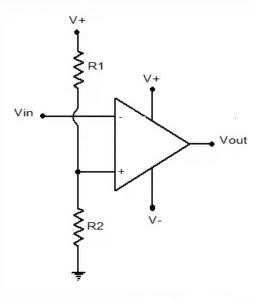
Functionality of Inverting Comparators:
At its core, an inverting comparator compares two input voltages. However, its output is the inverse of what you might expect from a standard comparator. If the non-inverting input (\( V_+ \)) is higher than the inverting input (\( V_\)), instead of producing a high output, the inverting comparator will produce a low output, and vice versa.
Characteristics of Inverting Comparators:
- 1. Inverse Logic: The primary distinguishing feature of inverting comparators is their ability to produce an output that’s opposite to the expected result of the comparison.
- 2. Binary Output: Like other comparators, the output is typically digital, either ‘high’ or ‘low’, ‘1’, or ‘0’.
- 3. Consistency: Despite the inversion, their operation remains consistent and predictable.
Applications of Inverting Comparators:
Inverting comparators are valuable in scenarios where reversed logic is beneficial. Some applications include:
- Logic circuits: Where inversion of logic states is required.
- Control systems: Where a reversed response to an input condition is desired.
- Signal processing: Modifying or manipulating signals based on inverse logic.
Advantages of Inverting Comparators:
- Flexibility: They offer an alternative approach to standard comparison, expanding design options.
- Simplicity: While their output logic is inverted, their design and operation remain straightforward.
- Integration: They can be easily incorporated into both analog and digital systems, providing designers with a tool for varied logic operations.
6. Non-Inverting Comparators
Non-inverting comparators stand as the more direct and intuitive counterparts to inverting comparators. Their operation aligns with our natural expectations, producing an output that directly corresponds to the relationship between the input voltages.
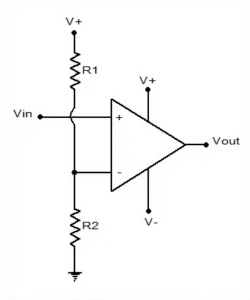
Functionality of Non-Inverting Comparators:
A non-inverting comparator takes in two input voltages for comparison. If the non-inverting input V1 is greater than the inverting input V2, the output is high. Conversely, if V2 is greater than V1, the output is low. The output directly mirrors the comparison result without any inversion.
Characteristics of Non-Inverting Comparators:
- Direct Logic: The primary trait of non-inverting comparators is their straightforward logic, where the output directly reflects the input conditions.
- Binary Output: The output is typically digital, represented as ‘high’ or ‘low’, ‘1’ or ‘0’.
- Predictability: Their operation is intuitive and aligns with common expectations, making them easy to understand and implement.
Applications of Non-Inverting Comparators:
Non-inverting comparators are foundational in many electronic systems, with applications including:
- Threshold detection: Identifying when a signal surpasses a specific voltage level.
- Protection circuits: Monitoring voltage levels to ensure they remain within safe limits.
- Data comparison: Directly comparing digital data in computing systems.
Advantages of Non-Inverting Comparators:
- Clarity: Their direct logic provides unambiguous results.
- Versatility: Suitable for a wide range of applications, from basic to complex systems.
- Reliability: Their predictable behavior ensures consistent performance across various scenarios.
7. Differential Comparators
Differential comparators stand out in the world of electronic comparators due to their focus on the difference between input signals. Instead of just determining which signal is larger, they emphasize the magnitude of the difference between the two inputs.
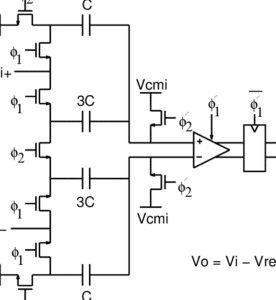
Functionality of Differential Comparators:
A differential comparator evaluates the difference between its two input voltages. If the difference exceeds a certain threshold, the comparator produces a specific output. This threshold can often be set or adjusted based on the application’s requirements.
Characteristics of Differential Comparators:
- Difference Sensitivity: The primary trait of differential comparators is their ability to detect and respond to differences between input signals.
- Adjustable Threshold: Many differential comparators allow users to set the difference threshold, offering flexibility in applications.
- Analog or Digital Outputs: Depending on the design, the output can be a continuous analog signal representing the difference or a digital signal indicating if the threshold was crossed.
Applications of Differential Comparators:
These types of comparators find their niche in scenarios where the exact difference between signals is crucial, including:
- Error Detection: Identifying discrepancies between expected and received signals.
- Precision Measurements: In systems where minute differences in signals can have significant impacts.
- Feedback Control Systems: Where the difference between a setpoint and actual value determines the system’s response.
Advantages of Differential Comparators:
- Accuracy: These types of comparators provide a precise measure of the difference between input signals.
- Flexibility: The ability to adjust difference thresholds allows them to be tailored to specific applications.
- Versatility: Suitable for both analog and digital systems, depending on the design.
In a nutshell, differential comparators shine a spotlight on the nuances between signals. By focusing on the differences, they offer a unique perspective, ensuring that even the slightest discrepancies don’t go unnoticed. This precision makes them invaluable in systems where accuracy and attention to detail are paramount.
8. Rail-to-Rail Comparators
Rail-to-rail comparators are unique among all types of comparators. They are designed to operate efficiently across a wide voltage range, right from the lowest (ground) to the highest (supply voltage) levels. This ability to function across the entire power supply range gives them their distinctive name and a unique edge in versatility.
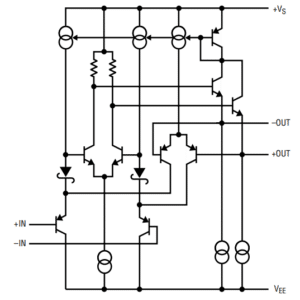
Functionality of Rail-to-Rail Comparators:
A rail-to-rail comparator can accept input signals that span the entire voltage range of its power supply. Additionally, its output can swing fully from the ground to the supply voltage, ensuring maximum signal amplitude and clarity.
Characteristics of Rail-to-Rail Comparators:
- Full Voltage Range Operation: These comparators can handle input signals from the very bottom to the top of their supply voltage.
- Maximized Output Swing: The output can transition fully between the ground and supply voltage, providing clear and strong signals.
- Enhanced Flexibility: They are adaptable to various voltage conditions, making them suitable for diverse applications.
Applications of Rail-to-Rail Comparators:
Rail-to-rail comparators are particularly beneficial in scenarios where the full voltage range needs to be utilized, including:
- Battery-Powered Devices: Maximizing the use of available voltage is crucial for efficiency.
- High-Dynamic-Range Systems: These signals can vary widely in amplitude and still need to be accurately compared.
- Low-Voltage Electronics: Ensuring optimal performance even when supply voltages are minimal.
Advantages of Rail-to-Rail Comparators:
- Versatility: Their ability to operate across the full voltage spectrum makes them adaptable to a wide range of scenarios.
- Efficiency: They ensure that even at low supply voltages, performance remains optimal.
- Clarity: The full output swing ensures clear and distinguishable output signals.
Takeaways from Different Types of Comparators
As we’ve journeyed through the types of comparators in electronics, it’s evident that these staple electronic components hold immense significance. Their ability to swiftly and accurately compare signals, whether analog or digital, ensures that our devices respond appropriately to ever-changing conditions. If you liked this post, make sure to check out our guide on 4 types of bridge rectifiers as well.
FAQ
- What are electronic comparators?
Electronic comparators are devices that compare two input signals and produce an output based on their relationship, such as which signal is greater or if they’re equal. - How are window comparators different from standard comparators?
Window comparators don’t just compare two voltages; they check if a voltage lies within a specific range or “window,” defined by upper and lower thresholds. - Why are rail-to-rail comparators significant in electronics?
Rail-to-rail comparators can operate efficiently across the entire voltage range of their power supply, from the lowest to the highest levels, maximizing signal amplitude and clarity. - In what practical scenarios are electronic comparators commonly used?
Electronic comparators find applications in battery monitoring, temperature control systems, digital data processing, audio equipment, oscillator circuits, and safety mechanisms, among others.
